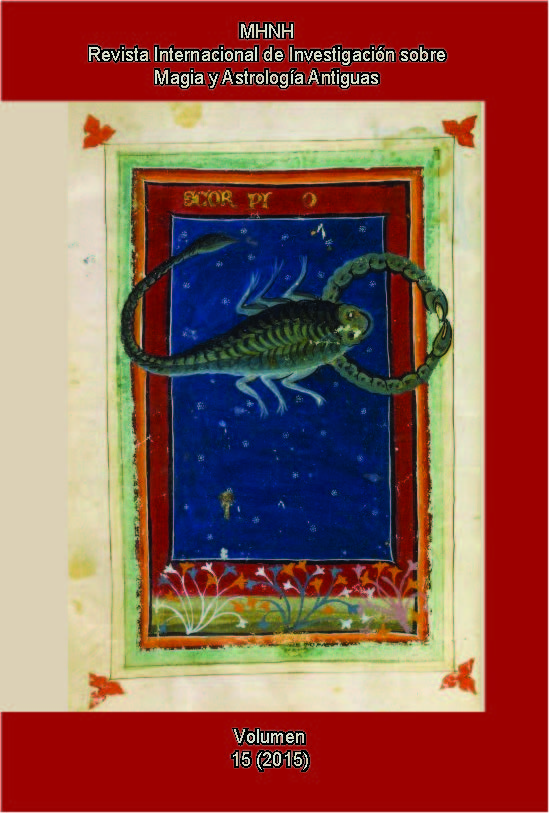The Color of the Time. Planetary Memory in a Medieval Painting
DOI:
https://doi.org/10.24310/mhnh.vi15.15645Abstract
The Abbey of Novalesa, which is in the Susa’s Valley near Turin (Italy), is an important monument of Medieval art. Among the chapels of the Abbatial complex, the most interesting one is the one devoted to St. Eldrado. In a painting on the left wall, we find St. Eldrado dying, while, on an higher part, we see a portion of blue sky containing eight shining stars subscribed by different colored bracelets; from the central star starts a cone of light that ends at the Saint’s head. There is a strictly relationship among colors and planetary stars, of which this fresco is a late testimony: a star is red, while the others chromatically change turning from clear green to yellow. This chromatic change is typical of a very ancient symbolic
tradition, which crossed the whole Near East and that can be found in the Platonic theory of colors. That deals with the idea that the stars are the characters of a mysterious celestial writing, a sort of “book”, represented by the entire celestial archway. A thing that sometimes can be understood as the special way how the past, the present and the future of the whole universe are described. And the planets have a crucial role into this.
Downloads
Metrics

Downloads
Published
How to Cite
Issue
Section
License
This work is licensed under a Creative Commons Attribution-NonCommercial-NoDerivatives 4.0 International License.
All contents published in MHNH. Revista Internacional de Investigación sobre Magia y Astrología Antiguas are protected under the Creative Commons Attribution-NonCommercial-ShareAlike 4.0 International (CC BY-NC-SA 4.0) license. All about this license is available in the following link: <http://creativecommons.org/licenses/by-nc-sa/4.0>
Users can copy, use, redistribute, share and exhibit publicly as long as:
- The original source and authorship of the material are cited (Journal, Publisher and URL of the work).
- It is not used for comercial purposes.
- The existence of the license and its especifications are mentioned.
There are two sets of authors’ rights: moral and property rights. Moral rights are perpetual prerogatives, unrenounceable, not-transferable, unalienable, imprescriptible and inembargable. According to authors’ rights legislation, MHNH. Revista Internacional de Investigación sobre Magia y Astrología Antiguas recognizes and respects authors moral rights, as well as the ownership of property rights, which will be transferred to University of Malaga in open access. The property rights are referred to the benefits that are gained by the use or the dissemination of works. MHNH. Revista Internacional de Investigación sobre Magia y Astrología Antiguas is published in an open access form and it is exclusively licenced by any means for doing or authorising distribution, dissemination, reproduction, , adaptation, translation or arrangement of works.
Authors are responsable for obtaining the necessary permission to use copyrighted images.






